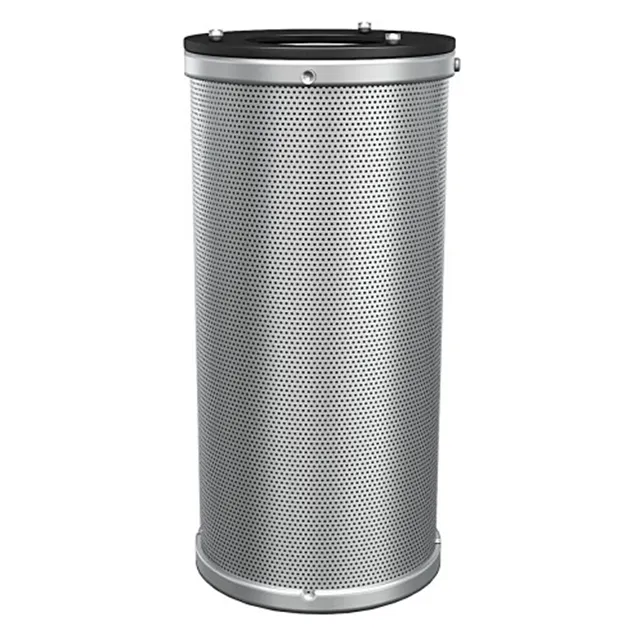 Tel:
+8615930870079
Tel:
+8615930870079
gru . 26, 2024 09:01 Back to list
dust collector pleated filter
The Importance of Pleated Filters in Dust Collectors
In various industries, maintaining a clean and safe working environment is essential. One of the pivotal components in achieving this is a dust collector, which efficiently removes airborne particles, dust, and contaminants from the air. Central to the effectiveness of these systems are pleated filters, which offer exceptional filtration performance. This article will explore the benefits of pleated filters in dust collectors, their working principles, and the factors to consider when selecting them.
What are Pleated Filters?
Pleated filters are made from a variety of media, typically synthetic or fiberglass, which is folded in a zigzag pattern. This folding increases the surface area of the filter, allowing it to capture more particles while providing lower resistance to airflow. The pleated design enhances the filter's ability to trap dust, ensuring that the air released back into the environment is cleaner and safer.
Benefits of Pleated Filters
1. High Filtration Efficiency Pleated filters are designed to capture a wide range of particulate sizes, from large dust particles to fine allergens and particulate matter (PM). This high filtration efficiency is crucial in industries such as woodworking, manufacturing, pharmaceuticals, and food processing, where even small amounts of dust or contaminants can lead to significant health risks or product contamination.
2. Extended Service Life Due to their large surface area, pleated filters can hold more dust before becoming clogged compared to traditional flat filters. This results in longer service life and reduced frequency of filter replacement. Companies can save on maintenance costs and reduce downtime, allowing for smoother production processes.
3. Lower Energy Consumption The effective design of pleated filters allows for optimal airflow with minimal resistance. This characteristic results in lower energy demands on the dust collection system. Over time, reduced energy consumption can lead to significant cost savings, making pleated filters not only an environmentally friendly choice but also a financially smart one.
4. Versatility Pleated filters can be constructed from various materials depending on the specific application, such as synthetic fibers for oil and grease applications or electrostatic media for enhanced particle capture. This versatility allows industries to customize their dust collection systems according to their unique needs.
dust collector pleated filter

Selecting the Right Pleated Filter
When choosing pleated filters for dust collectors, several factors should be considered
- Filter Material Select a filter material that matches the specific contaminants being captured. Different materials offer varying levels of efficiency, durability, and compatibility with chemical exposures.
- MERV Rating The Minimum Efficiency Reporting Value (MERV) rating indicates the filter's efficiency at capturing airborne particles. Higher MERV ratings indicate better filtration capabilities. It’s important to choose a filter with an appropriate MERV rating for your application without compromising airflow.
- Size and Dimensions Ensure that the pleated filter fits properly within the dust collector system. An incorrectly sized filter can lead to leaks and reduced effectiveness.
- Environmental Conditions Consider the surrounding environment, including temperature, humidity, and the presence of corrosive agents. Some pleated filters are specifically designed to withstand extreme conditions.
Conclusion
Pleated filters are a crucial component of modern dust collectors, offering enhanced filtration efficiency, extended service life, and lower energy consumption. Selecting the right pleated filter involves careful consideration of materials, ratings, and environmental factors. By investing in high-quality pleated filters, industries can ensure a cleaner, safer work environment while also enjoying operational efficiencies and cost savings. As the demand for cleaner air continues to grow, the role of pleated filters in dust collection systems becomes even more significant, underlining their importance in industrial applications.
-
Types and Applications of Air Filtration CartridgesNewsJul.28,2025
-
The Role of Gas Turbine FiltersNewsJul.28,2025
-
Mastering Air Filter Cartridge UseNewsJul.28,2025
-
Advanced Turbine Filters for Modern Gas TurbinesNewsJul.28,2025
-
Cellulose Air Filter Cartridge Advantages in Dust FiltrationNewsJul.28,2025
-
Cellulose Filters for Air Particle ReductionNewsJul.28,2025

 Email:
Email:





